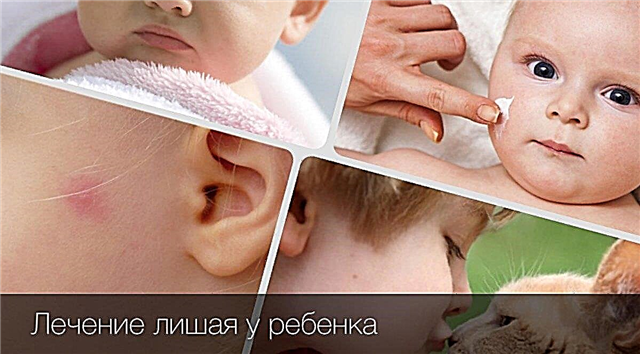
One of the most important results of a child's blood test is the red blood cell count. Low levels of these red blood cells are called erythropenia. It can be caused by physiological reasons, and various diseases. To understand whether a child with reduced red blood cells needs medical care, parents should know why there are fewer red blood cells, how the lack of red blood cells manifests itself in children, and what should be done if such a problem is detected in a blood test.

What is the level of red blood cells considered low
The lower limit of the norm for the number of erythrocytes in the blood of a child of different ages is considered:
If in the analysis of the child's blood the indicator is lower than such figures, this requires a more detailed examination in order to identify the reason why there are not enough red blood cells, as well as the appointment of the correct treatment.
Types of erythropenia
- Relative... Such a decrease in the number of red blood cells is also called false, since the number of cells is not reduced, and the underestimation is associated with blood thinning (for example, due to heavy drinking).
- Absolute... This type of erythropenia is caused by a lack of erythrocytes in the peripheral blood, caused by their insufficient formation, accelerated destruction and other reasons.

Causes
A lower number of red blood cells than should be normal is due to:
- Violation of the formation of red cells in the bone marrow. The lack of red blood cells in such cases can be associated with a deficiency of vitamins and minerals (this is often found in hypovitaminosis and vegetarian diets) or with damage to the bone marrow with poisons, tumors, drugs, radiation and other factors.
- The destruction of red blood cells in the bloodstream. It can be triggered by chronic inflammation, infection, autoimmune reactions, poisoning, a drug, or other adverse effect on blood cells.
- Enhanced elimination of red blood cells from the child's body. Loss of red blood cells can be associated with bleeding from injuries, fractures or surgeries, as well as with kidney or intestinal dysfunction, due to which red blood cells enter the secretions.

A reduced number of erythrocytes is found in such diseases:
- Iron-deficiency anemia.
- Hemoglobinopathy.
- Hereditary pathology of erythrocytes.
- Leukemia.
- B12-deficiency anemia.
- Hemolytic disease.
- Malignant tumors.
- Myxedema.
- Hemophilia.
- Pyelo- or glomerulonephritis.
- Diphtheria, whooping cough, and other infections.
- Cirrhosis of the liver.
- Collagenoses.
- Chronic renal failure.
- Multiple myeloma.
- Ulcerative lesion of the gastrointestinal tract.
We recommend that you watch the recording of the program of the famous doctor Yevgeny Komarovsky, dedicated to the analysis of the child's blood. You will learn in detail about what different indicators mean, including the level of red blood cells.
Symptoms
With a reduced number of red blood cells, the general condition of the child rarely remains normal. Much more often, a lack of red blood cells occurs:
- Weakness.
- Lethargy.
- Sleepiness.
- Decreased appetite.
- Desire to eat inedible things (chalk, sand).
- The rapid onset of fatigue.
- Skin that is cool and damp to the touch.
- Reduced blood pressure.
- The temperature rises to 37-37.5 degrees.
- Pale skin tone.
- Brittle hair and dryness.
- Rapid pulse.
- Noise in the ears.
- Inhibited and slow action.
- Dizziness and sometimes fainting.
- Decreased visual acuity.
- Frequent SARS.

Why is erythropenia dangerous for a child?
The reduced number of red blood cells is the reason for the insufficient supply of oxygen to the tissues, as well as the deterioration of the removal of carbon dioxide from them.
The result will be a dysfunction of internal organs, which is very dangerous in childhood and can cause developmental delay. Also, the child's immunity decreases and blood clotting problems are possible.
What to do
It does not matter if a reduced level of red blood cells was detected by chance during a routine examination, or erythropenia was found during an analysis in a child with complaints of weakness, pallor and other symptoms, in any case, you should consult a doctor.
Since the most common cause of a decrease in the number of red blood cells is anemia, this pathology will be the first to be excluded or confirmed in a child with erythropenia.

In the case when a low number of red blood cells is indeed a sign of anemia, it is important to determine its form. For this, the pediatrician will evaluate other indicators associated with red blood cells, as well as the level of hemoglobin. For example, if the average volume of red blood cells is low, this is characteristic of anemia caused by iron deficiency.
In assessing the type of anemia, anisocytosis (different diameters of erythrocytes) and anisochromia (different colors of red blood cells) are also important.
Taking these and other parameters into account, the doctor will be able to make a diagnosis, after which he will prescribe the necessary treatment for the child. If erythropenia is a symptom of another disease, restoration of the number of erythrocytes to normal values is possible only with successful treatment.




